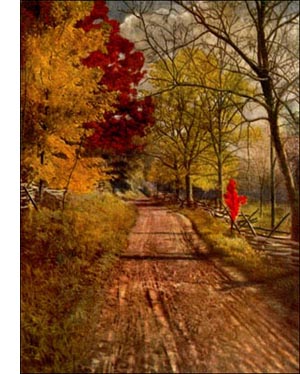Ear Leaved Magnolia or Mountain Magnolia Tree
 Ear-leaved Magnolia, Mountain Magnolia (Magnolia Fraseri, Walt.)-Tree 30 to 40 feet high, with small, broad crown above slender, often leaning trunk. Branches stout, angular, erect. Bark thin, brown, smooth, with warty patches. Wood brownish yellow, weak, soft. Buds smooth, purplish; terminal 1 to 2 inches long; axillary very small. Leaves obovate, acute, with ear-shaped lobes at base, 10 to 12 inches long, bright green, smooth, whorled near end of branchlet. Flowers creamy white, fragrant, spreading, 8 to 10 inches across, petals narrowed at base. Fruit oblong, 4 to 5 inches long, bright rose at maturity; carpels with long horny tips, seeds 5/8 inch long. Preferred habitat, well-drained soil along mountain streams. Distribution, valleys of Appalachian Mountains from Virginia and Tennessee to Georgia, Alabama and northern Mississippi; abundant in South Carolina along headwaters of the Savannah River. Uses: Cultivated in gardens of Eastern States and in Europe. Hardy to New England.
Ear-leaved Magnolia, Mountain Magnolia (Magnolia Fraseri, Walt.)-Tree 30 to 40 feet high, with small, broad crown above slender, often leaning trunk. Branches stout, angular, erect. Bark thin, brown, smooth, with warty patches. Wood brownish yellow, weak, soft. Buds smooth, purplish; terminal 1 to 2 inches long; axillary very small. Leaves obovate, acute, with ear-shaped lobes at base, 10 to 12 inches long, bright green, smooth, whorled near end of branchlet. Flowers creamy white, fragrant, spreading, 8 to 10 inches across, petals narrowed at base. Fruit oblong, 4 to 5 inches long, bright rose at maturity; carpels with long horny tips, seeds 5/8 inch long. Preferred habitat, well-drained soil along mountain streams. Distribution, valleys of Appalachian Mountains from Virginia and Tennessee to Georgia, Alabama and northern Mississippi; abundant in South Carolina along headwaters of the Savannah River. Uses: Cultivated in gardens of Eastern States and in Europe. Hardy to New England.The eared leaves of this tree and the prominent horns that decorate its brilliant seed cones readily distinguish it from the preceding species, which it resembles in habit and in the whorled leaf arrangement. The two are alike in their adaptability to culture far outside of their natural range. Each has proved successful as a hardy stock upon which to graft half-hardy exotic varieties. Planted in the Northern States, these trees seem to hold their own even with M. acuminata. A peculiarity of the mountain magnolia, umbrella tree and large-leaved cucumber tree is that the foliage of all three falls without any perceptible change of colour. The leaves are pretty much frayed and blemished before falling.